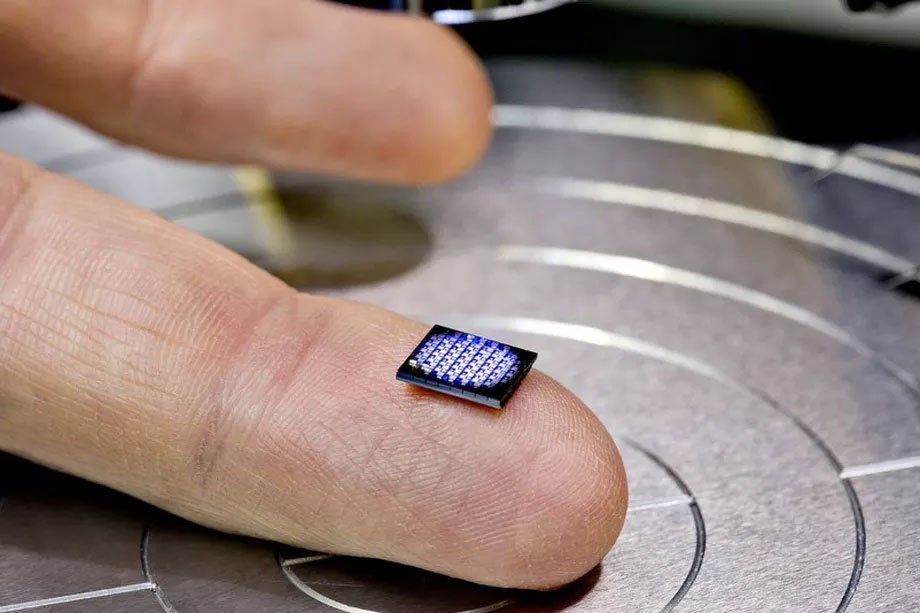IBM introduced the smallest computer in the world

Salt crystals for scale
As part of the IBM Think 2018 conference this week in the US, IBM offered to discuss its “5 in 5” idea - five technologies that will most strongly affect society and business in the next five years. IBM believes that such technologies will be blockchain, unbiased AI, quantum computing, cryptography, and artificial intelligence microscopes. And to help humanity in all these industries will be the new smallest computer in the world, which was developed at IBM Research. The company itself has not yet submitted it, but journalists have unearthed details about this interesting device.
The size of the computer is 1 x 1 mm, smaller than some salt granules. (In the photo with the finger below - a set of 64 motherboards, each of which contains two such mini-computers). The cost of production of one device is ten cents.
Prior to that, the Michigan Micro Mote (M3), introduced in 2015, was considered the smallest computer in the world. Its dimensions are 2 x 4 x 4 mm. That computer contained a pressure and motion sensor, a radio, a solar battery, and also knew how to take a photo and measure the temperature, keeping this information in its memory. Computer programming was carried out by pulses of light. Now it is used in implantable medical devices.

IBM believes that their computer will be not only the smallest, but also quite powerful. According to the characteristics it is comparable to the x86 chip from the 90s. He has enough strength to play the first Doom on it (he demanded a 386 processor and at least 4 MB of RAM). The computer has several hundreds of thousands of transistors, SRAM memory and photovoltaic cells for feeding, and it can “output information” to the outside world using a photo detector and a LED. The IBM mini-computer is not a video chip or a processor, but a completely independent device, only without peripherals. Some enthusiasts are already planning how they will use the LED in the chip as a single-pixel display due to the low price. True, to create a full-fledged screen of such devices, you will need to spend more than a hundred thousand dollars.
IBM itself plans to use the device to track the shipment of goods and identify thefts. The computer can also be useful in aviation, automotive technology and systems for smart home. IBM believed in the blockchain technology, and such chips, according to her, can become reliable “crypto-anchors” for such chains.

At the moment, IBM researchers are only testing the prototype, so it’s too early to talk about a commercial launch. But Arvind Krishna, head of research at IBM, says that
Over the next five years, tiny computers that are smaller than a salt crystal will be embedded in everyday objects and devices.
Apd Visualization of the new chip from IBM Research:
